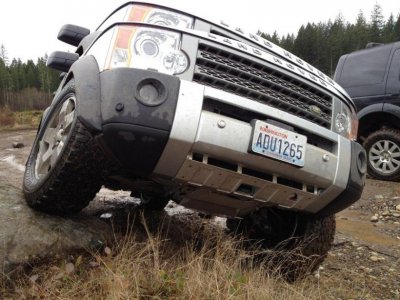So you are saying that the unsprung weight of the other-side wheel and tire would keep the compressed-side from getting further stuffed? I'm not sure I can mentally accept that.
Also...I meant the rock that Ryan, myself and Nasir climbed up last month in order to demonstrate the control-arm hitting the air shock...not your Tahuya example.
No. A sway bar works by transferring upwards motion from one wheel to a downward motion on the opposite. So if the passenger side wheel goes up, it pushes the drivers side down.
In the example photo from tahuya, as the passenger wheel starts to compress, the sway bar starts pushing the drivers side down. This pushing down of the driver's side starts "lifting" the front end way before the passenger side is fully compressed. Without sway bars, the passenger side would be able to be fully compressed before any "lifting" of the front end occurs (and this is simply because the passenger side can't compress any more). I mean, look at the photo, I am practically at ride height on the passenger front. The goal is to have that wheel fully compressed.
I quickly photoshopped an example of what I am talking about. The passenger wheel would be fully compressed and the vehicle would be much more level.


